An aerial view of Launch Pad 0A at the Mid-Atlantic Regional Spaceport shows construction progress as of June 29, 2015. Seven months after an Antares rocket carrying the doomed Orb-3 mission plummeted onto its launch pad, reconstruction efforts are in full swing in preparation for the rocket’s return to flight. On June 28, NASA’s Wallops Flight Facility celebrated its 70th anniversary by holding an open house, giving the public and media an opportunity to tour the launch facilities on Wallops Island. During this event, representatives from NASA and the Virginia Commercial Space Flight Authority shed some light on their progress toward reestablishing launch capability.
As catastrophic as the accident appeared, the damage to Launch Complex 0A was not as extensive as expected. Antares impacted just feet from the north wall of the flame trench. The reinforced concrete structure protected much of the launch pad from the force of the resulting explosion. Fortunately, the nearby storage tanks on the north side of the pad were also spared in the accident.
Antares seconds after exploding on the Orb-3 launch. Photo: Elliot Severn / Zero-G News In person, the launch complex doesn’t look much different than before, aside from the absence of the lightning masts. However, all around there are subtle reminders of the disaster that took place there. Within the perimeter fence, the front surfaces of structures facing the pad are blackened with char. Around the perimeter, flattened areas of fresh growth are littered with dead, burnt trees. Several small buildings and sheds still have their doors blown off their hinges.
The impact created a roughly 20-foot-wide, 10-foot-deep crater and destroyed the lightning mast on the northeast side of the pad. The massive concrete platform of the lightning mast was thrown into the air, landing on the southeast side of the pad and toppling the adjacent mast. The two remaining lightning masts were badly burned in the fireball and were later removed. Concrete on and around the launch mount suffered stress fractures from the blast and is gradually being repaired or replaced. Antares’ transporter/erector/launcher (TEL) was also damaged and will require a new hydraulic system to raise the launch vehicle.
The 307-foot-tall water tower, which feeds the sound suppression water deluge system, withstood the explosion and was undamaged. Had Antares destroyed the launch mount, the water tower, or the oxygen and kerosene storage tanks, repairs would have taken several years and would have been far more costly.
According to Dale Nash, Executive Director of the Virginia Commercial Space Flight Authority, “Repairs at the pad are expected to cost somewhere between 13 and 15 million dollars and it’s going to be a three way split between NASA, Orbital ATK, and the state of Virginia.” The repairs will return the launch pad to its original specifications. Future upgrades are planned, which will enable the pad to support taller, heavier configurations of Antares. Multiple local contractors are being used for the reconstruction.
The response to the Orb-3 accident has expedited plans that were already in place for facilities on Wallops Island. One of the adjacent sounding rocket facilities is being relocated farther north after its shelter was destroyed in the explosion. The fire house is also being moved north so that firemen can stand ready during launch operations. The old firehouse between Pad 0A and 0B was already scheduled for demolition.
Orbital ATK will soon take delivery of the new RD-181 engine from NPO Energomash, which will replace the Aerojet AJ-26 that powered the first stage of Antares. In the meantime, preparations are underway in the Horizontal Integration Facility (HIF) to modify an existing booster core to accept the RD-181. Launch pad renovations are expected to be completed in time for a 29-second static test firing of the new Antares booster by the end of the year. The first launch of the upgraded Antares is on track for next spring.
An aerial view of the Mid-Atlantic Regional Spaceport on Wallops Island. Orb-4 is currently slated to launch from Florida in December on a United Launch Alliance Atlas V rocket. With the recent loss of the SpaceX CRS-7 mission, Orb-4 is likely to be moved earlier in the launch manifest in order to shorten the gap between cargo flights to the International Space Station. At the CRS-7 post-launch press conference, NASA’s Associate Administrator for Human Exploration and Operations, Bill Gerstenmaier stated: “We will work with the United Launch Alliance and Orbital ATK to see when the right time to fly that is. If we can advance from December and the manifest lets us do that, we might want to fly as early as October.” Orbital ATK has reserved two Atlas V launch vehicles that can be used to launch Cygnus until Antares returns to service.
With thanks to our friend Patrick J. Hendrickson / Highcamera Aerial Photographic Services
Be sure to “Like” AmericaSpace on Facebook and follow us on Twitter: @AmericaSpace
Missions »
ISS »
Missions »
ISS »
COTS »
CYGNUS »
Posts associated with the ISS missions After Daylong Delay, NG-20 Cygnus Launches, Heads to Space Station
After Four-Month-Plus Stay, NG-19 Cygnus Cargo Ship Leaves Space Station
Last Antares 200-Series Rocket Launches, Delivers NG-19 Cygnus to Space Station
Northrop Grumman Prepares for Final Antares 230 Launch Tomorrow
Northrop Grumman Launches NG-18 Cygnus to Space Station, Honors Pioneer Sally Ride
NG-17 Cygnus Departs Space Station, Wraps Up Four-Month Stay
CRS-24 Dragon Launches, Heads to Space Station
NG-16 Cygnus Departs Space Station, Heads for Re-entry
NG-16 Cygnus Launches, Honors Challenger Veteran, Heads to Space Station
NG-16 Cygnus Prepares for Tuesday Launch, as OFT-2 Starliner Delay Lengthens
Next Cygnus Cargo Ship Named for Challenger Hero Ellison Onizuka
Station Crew Readies for Tuesday Cygnus Departure, NG-16 Launch NET 10 August
As CRS-22 Readies for Thursday Launch, SpaceX, AxiomSpace Plan for Four Missions Through 2023
SpaceX, ULA Primed for Five Launches in June, CRS-22 Dragon Set to Fly Thursday
Crew-2 Launches, Takes Aim on Space Station for Saturday Arrival
SpaceX Static-Fires Falcon 9 for Crew-2, As Boeing OFT-2 Mission Aims for Aug-Sept Launch
Crew-2 Astronauts Discuss Upcoming Mission, Eye 20 April Launch to ISS
Northrop Grumman Green-Lights Two More Cygnus Missions, As NG-15 Arrives at Space Station
ISS-Bound NG-15 Cygnus Honors ‘Hidden Figure’ Katherine Johnson
Multi-National Crew-2 Gears Up for 20 April Launch to Space Station
NG-14 Cygnus Departs Space Station, Two Weeks of Autonomous Fire Safety, Tech Experiments Ahead
NG-14 Cygnus Arrives at Space Station, Ahead of Expedition 64 Launch Next Week
Antares Breaks Launch Week Curse, as SpaceX Suffers Last-Second Scrub
Scrub Week Continues, Antares Launch Now NET Friday Night
Next NASA, SpaceX Crew Launch Set for Oct 31 with ‘Crew-1’
NG-14 Cygnus Readies for Tuesday Night Launch From Wallops
Next Cygnus Cargo Ship Named for Columbia Astronaut Kalpana Chawla
Second-Heaviest Cygnus, Antares Booster Processing Ramps Up for NG-14 Mission
Next Cygnus Supply Mission Targets 29 Sept Launch to Space Station
Rubins, Crewmates Discuss Upcoming Space Station Mission
Demo-2 Docks at Space Station, Expedition 63 Expands to Five Crew
T-1 Day: NASA, SpaceX Ready to Bring Human Spaceflight Back to America (Part 2)
NASA, SpaceX Ready to Return Human Spaceflight to American Soil (Part 1)
Astronauts Arrive in Florida for Launch Next Week on SpaceX Demo-2 Mission
Starlink Mission Slips to NET June; Demo-2 Next Up for SpaceX
Cygnus Departs Space Station; 2 Weeks of SAFFIRE Experiments Planned
NASA, SpaceX Preview First Crewed Dragon Mission, Set for May 27 Launch
NG-13 Cygnus Begins ISS Chase with 8,000 Pounds of Cargo for Space Station
Antares to Launch NG-13 ISS Resupply Tonight from VA, Spacecraft Named After Robert Lawrence
SpaceX Crew Dragon Inflight Abort Test Video
Antares Ready for Saturday Launch from Virginia to Resupply ISS (NG-12)
Antares to Launch NG-11 Cygnus from VA April 17, Honors Apollo 1 Hero Roger Chaffee
Crew Dragon Kicks Off Demo-1 Mission to Return Human Spaceflight to American Shores
Decade-Long Crew Dragon Program Stands Ready for Maiden Mission (Part 2)
Decade-Long Crew Dragon Program Stands Ready for Maiden Mission (Part 1)
NASA Clears SpaceX to Launch Crew Dragon ‘Demo-1’ on March 2
First Crew Dragon Demo On Track for Late-Night Launch March 2
Good Test Fire for First Crew Dragon Mission Paves Way to Launch NET Late February
Cygnus Arrives at Space Station with 7,400 Pounds of Fresh Supplies and Science
Antares Launches Ninth Cygnus Cargo Delivery Mission to Space Station
Posts associated with the COTS missions After Daylong Delay, NG-20 Cygnus Launches, Heads to Space Station
After Four-Month-Plus Stay, NG-19 Cygnus Cargo Ship Leaves Space Station
Last Antares 200-Series Rocket Launches, Delivers NG-19 Cygnus to Space Station
Northrop Grumman Prepares for Final Antares 230 Launch Tomorrow
Northrop Grumman Launches NG-18 Cygnus to Space Station, Honors Pioneer Sally Ride
NG-17 Cygnus Departs Space Station, Wraps Up Four-Month Stay
CRS-24 Dragon Launches, Heads to Space Station
NG-16 Cygnus Departs Space Station, Heads for Re-entry
NG-16 Cygnus Launches, Honors Challenger Veteran, Heads to Space Station
NG-16 Cygnus Prepares for Tuesday Launch, as OFT-2 Starliner Delay Lengthens
Next Cygnus Cargo Ship Named for Challenger Hero Ellison Onizuka
Station Crew Readies for Tuesday Cygnus Departure, NG-16 Launch NET 10 August
As CRS-22 Readies for Thursday Launch, SpaceX, AxiomSpace Plan for Four Missions Through 2023
SpaceX, ULA Primed for Five Launches in June, CRS-22 Dragon Set to Fly Thursday
Northrop Grumman Green-Lights Two More Cygnus Missions, As NG-15 Arrives at Space Station
ISS-Bound NG-15 Cygnus Honors ‘Hidden Figure’ Katherine Johnson
NG-14 Cygnus Departs Space Station, Two Weeks of Autonomous Fire Safety, Tech Experiments Ahead
NG-14 Cygnus Arrives at Space Station, Ahead of Expedition 64 Launch Next Week
Antares Breaks Launch Week Curse, as SpaceX Suffers Last-Second Scrub
Scrub Week Continues, Antares Launch Now NET Friday Night
NG-14 Cygnus Readies for Tuesday Night Launch From Wallops
Next Cygnus Cargo Ship Named for Columbia Astronaut Kalpana Chawla
Second-Heaviest Cygnus, Antares Booster Processing Ramps Up for NG-14 Mission
Next Cygnus Supply Mission Targets 29 Sept Launch to Space Station
Cygnus Departs Space Station; 2 Weeks of SAFFIRE Experiments Planned
NG-13 Cygnus Begins ISS Chase with 8,000 Pounds of Cargo for Space Station
Antares to Launch NG-13 ISS Resupply Tonight from VA, Spacecraft Named After Robert Lawrence
Antares Ready for Saturday Launch from Virginia to Resupply ISS (NG-12)
Antares to Launch NG-11 Cygnus from VA April 17, Honors Apollo 1 Hero Roger Chaffee
Cygnus Arrives at Space Station with 7,400 Pounds of Fresh Supplies and Science
Antares Launches Ninth Cygnus Cargo Delivery Mission to Space Station
SpaceX Launches Fourth Dragon of 2017, Nails 20th Landing with CRS-13 Mission
SLC-40 Ready for Return to Flight, With Fourth ISS-Bound Dragon of 2017
SpaceX Says New Improved SLC-40 Ready for Launches Again Following CRS-13 Test Fire
Orbital ATK Honors Veterans With Rousing Launch of OA-8 Cygnus to Space Station
SpaceX Launches Third Dragon of 2017 to Space Station, Lands 6th Rocket on LZ-1
Storms Threaten Post-Landing Securing of Falcon 9 First Stage on Monday
UPDATE: Good Falcon 9 Test Fire as SpaceX Aims for Aug 14 CRS-12 Launch
PHOTOS: SpaceX CRS-11 Launch and Landing
First Reusable Dragon Cargo Mission Launches Science and Supplies to Space Station
‘Godspeed, John Glenn’: Cygnus Soars Atop Atlas-V on Voyage to Space Station
John Glenn to Return to Space ‘In Spirit’ on ISS-Bound OA-7 Cygnus Cargo Mission
NASA Outlines Science Payloads, Ahead of Next ISS-Bound Cygnus Cargo Mission
SpaceX Soars from 39A for First Time, Delivers Dragon to Space & Returns Falcon to Earth
Pad 39A Set for First Post-Shuttle Launch, as SpaceX Readies for Weekend Return to Space Station
NASA Outlines Science Heading to Space Station Aboard CRS-10 Dragon
Through the Lens: Antares Returns to Flight on OA-5 Mission for NASA
Antares Returns to Flight, Delivering OA-5 Cygnus to Space Station
SpaceX Nails Launch and Landing Again, Dragon CRS-9 Now En Route to Space Station
Critical Science, Commercial Crew Hardware Headed to Space Station Aboard CRS-9 Dragon
Missions »
ISS »
COTS »
CYGNUS »
ORB-4 »
Posts associated with the ISS missions After Daylong Delay, NG-20 Cygnus Launches, Heads to Space Station
After Four-Month-Plus Stay, NG-19 Cygnus Cargo Ship Leaves Space Station
Last Antares 200-Series Rocket Launches, Delivers NG-19 Cygnus to Space Station
Northrop Grumman Prepares for Final Antares 230 Launch Tomorrow
Northrop Grumman Launches NG-18 Cygnus to Space Station, Honors Pioneer Sally Ride
NG-17 Cygnus Departs Space Station, Wraps Up Four-Month Stay
CRS-24 Dragon Launches, Heads to Space Station
NG-16 Cygnus Departs Space Station, Heads for Re-entry
NG-16 Cygnus Launches, Honors Challenger Veteran, Heads to Space Station
NG-16 Cygnus Prepares for Tuesday Launch, as OFT-2 Starliner Delay Lengthens
Next Cygnus Cargo Ship Named for Challenger Hero Ellison Onizuka
Station Crew Readies for Tuesday Cygnus Departure, NG-16 Launch NET 10 August
As CRS-22 Readies for Thursday Launch, SpaceX, AxiomSpace Plan for Four Missions Through 2023
SpaceX, ULA Primed for Five Launches in June, CRS-22 Dragon Set to Fly Thursday
Crew-2 Launches, Takes Aim on Space Station for Saturday Arrival
SpaceX Static-Fires Falcon 9 for Crew-2, As Boeing OFT-2 Mission Aims for Aug-Sept Launch
Crew-2 Astronauts Discuss Upcoming Mission, Eye 20 April Launch to ISS
Northrop Grumman Green-Lights Two More Cygnus Missions, As NG-15 Arrives at Space Station
ISS-Bound NG-15 Cygnus Honors ‘Hidden Figure’ Katherine Johnson
Multi-National Crew-2 Gears Up for 20 April Launch to Space Station
NG-14 Cygnus Departs Space Station, Two Weeks of Autonomous Fire Safety, Tech Experiments Ahead
NG-14 Cygnus Arrives at Space Station, Ahead of Expedition 64 Launch Next Week
Antares Breaks Launch Week Curse, as SpaceX Suffers Last-Second Scrub
Scrub Week Continues, Antares Launch Now NET Friday Night
Next NASA, SpaceX Crew Launch Set for Oct 31 with ‘Crew-1’
NG-14 Cygnus Readies for Tuesday Night Launch From Wallops
Next Cygnus Cargo Ship Named for Columbia Astronaut Kalpana Chawla
Second-Heaviest Cygnus, Antares Booster Processing Ramps Up for NG-14 Mission
Next Cygnus Supply Mission Targets 29 Sept Launch to Space Station
Rubins, Crewmates Discuss Upcoming Space Station Mission
Demo-2 Docks at Space Station, Expedition 63 Expands to Five Crew
T-1 Day: NASA, SpaceX Ready to Bring Human Spaceflight Back to America (Part 2)
NASA, SpaceX Ready to Return Human Spaceflight to American Soil (Part 1)
Astronauts Arrive in Florida for Launch Next Week on SpaceX Demo-2 Mission
Starlink Mission Slips to NET June; Demo-2 Next Up for SpaceX
Cygnus Departs Space Station; 2 Weeks of SAFFIRE Experiments Planned
NASA, SpaceX Preview First Crewed Dragon Mission, Set for May 27 Launch
NG-13 Cygnus Begins ISS Chase with 8,000 Pounds of Cargo for Space Station
Antares to Launch NG-13 ISS Resupply Tonight from VA, Spacecraft Named After Robert Lawrence
SpaceX Crew Dragon Inflight Abort Test Video
Antares Ready for Saturday Launch from Virginia to Resupply ISS (NG-12)
Antares to Launch NG-11 Cygnus from VA April 17, Honors Apollo 1 Hero Roger Chaffee
Crew Dragon Kicks Off Demo-1 Mission to Return Human Spaceflight to American Shores
Decade-Long Crew Dragon Program Stands Ready for Maiden Mission (Part 2)
Decade-Long Crew Dragon Program Stands Ready for Maiden Mission (Part 1)
NASA Clears SpaceX to Launch Crew Dragon ‘Demo-1’ on March 2
First Crew Dragon Demo On Track for Late-Night Launch March 2
Good Test Fire for First Crew Dragon Mission Paves Way to Launch NET Late February
Cygnus Arrives at Space Station with 7,400 Pounds of Fresh Supplies and Science
Antares Launches Ninth Cygnus Cargo Delivery Mission to Space Station
Posts associated with the COTS missions After Daylong Delay, NG-20 Cygnus Launches, Heads to Space Station
After Four-Month-Plus Stay, NG-19 Cygnus Cargo Ship Leaves Space Station
Last Antares 200-Series Rocket Launches, Delivers NG-19 Cygnus to Space Station
Northrop Grumman Prepares for Final Antares 230 Launch Tomorrow
Northrop Grumman Launches NG-18 Cygnus to Space Station, Honors Pioneer Sally Ride
NG-17 Cygnus Departs Space Station, Wraps Up Four-Month Stay
CRS-24 Dragon Launches, Heads to Space Station
NG-16 Cygnus Departs Space Station, Heads for Re-entry
NG-16 Cygnus Launches, Honors Challenger Veteran, Heads to Space Station
NG-16 Cygnus Prepares for Tuesday Launch, as OFT-2 Starliner Delay Lengthens
Next Cygnus Cargo Ship Named for Challenger Hero Ellison Onizuka
Station Crew Readies for Tuesday Cygnus Departure, NG-16 Launch NET 10 August
As CRS-22 Readies for Thursday Launch, SpaceX, AxiomSpace Plan for Four Missions Through 2023
SpaceX, ULA Primed for Five Launches in June, CRS-22 Dragon Set to Fly Thursday
Northrop Grumman Green-Lights Two More Cygnus Missions, As NG-15 Arrives at Space Station
ISS-Bound NG-15 Cygnus Honors ‘Hidden Figure’ Katherine Johnson
NG-14 Cygnus Departs Space Station, Two Weeks of Autonomous Fire Safety, Tech Experiments Ahead
NG-14 Cygnus Arrives at Space Station, Ahead of Expedition 64 Launch Next Week
Antares Breaks Launch Week Curse, as SpaceX Suffers Last-Second Scrub
Scrub Week Continues, Antares Launch Now NET Friday Night
NG-14 Cygnus Readies for Tuesday Night Launch From Wallops
Next Cygnus Cargo Ship Named for Columbia Astronaut Kalpana Chawla
Second-Heaviest Cygnus, Antares Booster Processing Ramps Up for NG-14 Mission
Next Cygnus Supply Mission Targets 29 Sept Launch to Space Station
Cygnus Departs Space Station; 2 Weeks of SAFFIRE Experiments Planned
NG-13 Cygnus Begins ISS Chase with 8,000 Pounds of Cargo for Space Station
Antares to Launch NG-13 ISS Resupply Tonight from VA, Spacecraft Named After Robert Lawrence
Antares Ready for Saturday Launch from Virginia to Resupply ISS (NG-12)
Antares to Launch NG-11 Cygnus from VA April 17, Honors Apollo 1 Hero Roger Chaffee
Cygnus Arrives at Space Station with 7,400 Pounds of Fresh Supplies and Science
Antares Launches Ninth Cygnus Cargo Delivery Mission to Space Station
SpaceX Launches Fourth Dragon of 2017, Nails 20th Landing with CRS-13 Mission
SLC-40 Ready for Return to Flight, With Fourth ISS-Bound Dragon of 2017
SpaceX Says New Improved SLC-40 Ready for Launches Again Following CRS-13 Test Fire
Orbital ATK Honors Veterans With Rousing Launch of OA-8 Cygnus to Space Station
SpaceX Launches Third Dragon of 2017 to Space Station, Lands 6th Rocket on LZ-1
Storms Threaten Post-Landing Securing of Falcon 9 First Stage on Monday
UPDATE: Good Falcon 9 Test Fire as SpaceX Aims for Aug 14 CRS-12 Launch
PHOTOS: SpaceX CRS-11 Launch and Landing
First Reusable Dragon Cargo Mission Launches Science and Supplies to Space Station
‘Godspeed, John Glenn’: Cygnus Soars Atop Atlas-V on Voyage to Space Station
John Glenn to Return to Space ‘In Spirit’ on ISS-Bound OA-7 Cygnus Cargo Mission
NASA Outlines Science Payloads, Ahead of Next ISS-Bound Cygnus Cargo Mission
SpaceX Soars from 39A for First Time, Delivers Dragon to Space & Returns Falcon to Earth
Pad 39A Set for First Post-Shuttle Launch, as SpaceX Readies for Weekend Return to Space Station
NASA Outlines Science Heading to Space Station Aboard CRS-10 Dragon
Through the Lens: Antares Returns to Flight on OA-5 Mission for NASA
Antares Returns to Flight, Delivering OA-5 Cygnus to Space Station
SpaceX Nails Launch and Landing Again, Dragon CRS-9 Now En Route to Space Station
Critical Science, Commercial Crew Hardware Headed to Space Station Aboard CRS-9 Dragon
Posts associated with the CYGNUS missions After Daylong Delay, NG-20 Cygnus Launches, Heads to Space Station
After Four-Month-Plus Stay, NG-19 Cygnus Cargo Ship Leaves Space Station
Last Antares 200-Series Rocket Launches, Delivers NG-19 Cygnus to Space Station
Northrop Grumman Prepares for Final Antares 230 Launch Tomorrow
Northrop Grumman Launches NG-18 Cygnus to Space Station, Honors Pioneer Sally Ride
NG-17 Cygnus Departs Space Station, Wraps Up Four-Month Stay
NG-16 Cygnus Departs Space Station, Heads for Re-entry
NG-16 Cygnus Launches, Honors Challenger Veteran, Heads to Space Station
NG-16 Cygnus Prepares for Tuesday Launch, as OFT-2 Starliner Delay Lengthens
Next Cygnus Cargo Ship Named for Challenger Hero Ellison Onizuka
Station Crew Readies for Tuesday Cygnus Departure, NG-16 Launch NET 10 August
Northrop Grumman Green-Lights Two More Cygnus Missions, As NG-15 Arrives at Space Station
ISS-Bound NG-15 Cygnus Honors ‘Hidden Figure’ Katherine Johnson
NG-14 Cygnus Departs Space Station, Two Weeks of Autonomous Fire Safety, Tech Experiments Ahead
NG-14 Cygnus Arrives at Space Station, Ahead of Expedition 64 Launch Next Week
Antares Breaks Launch Week Curse, as SpaceX Suffers Last-Second Scrub
Scrub Week Continues, Antares Launch Now NET Friday Night
NG-14 Cygnus Readies for Tuesday Night Launch From Wallops
Next Cygnus Cargo Ship Named for Columbia Astronaut Kalpana Chawla
Second-Heaviest Cygnus, Antares Booster Processing Ramps Up for NG-14 Mission
Next Cygnus Supply Mission Targets 29 Sept Launch to Space Station
Cygnus Departs Space Station; 2 Weeks of SAFFIRE Experiments Planned
NG-13 Cygnus Begins ISS Chase with 8,000 Pounds of Cargo for Space Station
Antares to Launch NG-13 ISS Resupply Tonight from VA, Spacecraft Named After Robert Lawrence
Antares Ready for Saturday Launch from Virginia to Resupply ISS (NG-12)
Antares to Launch NG-11 Cygnus from VA April 17, Honors Apollo 1 Hero Roger Chaffee
Cygnus Arrives at Space Station with 7,400 Pounds of Fresh Supplies and Science
Antares Launches Ninth Cygnus Cargo Delivery Mission to Space Station
Orbital ATK Honors Veterans With Rousing Launch of OA-8 Cygnus to Space Station
‘Godspeed, John Glenn’: Cygnus Soars Atop Atlas-V on Voyage to Space Station
John Glenn to Return to Space ‘In Spirit’ on ISS-Bound OA-7 Cygnus Cargo Mission
NASA Outlines Science Payloads, Ahead of Next ISS-Bound Cygnus Cargo Mission
Through the Lens: Antares Returns to Flight on OA-5 Mission for NASA
Antares Returns to Flight, Delivering OA-5 Cygnus to Space Station
New Improved Antares Preparing for Test Fire Ahead of July 6 Return to Flight
A Look at the Science and Experiments Aboard Cygnus ‘Rick Husband’
A Cygnus Came A’Calling: Orbital ATK’s OA-6 Cargo Ship Arrives at Space Station
Spectacular Atlas V Launch Carries Rick Husband Back to Space
ULA Stands Ready to Deliver Second Orbital ATK Cygnus to Space Station on Tuesday Night
Columbia’s Final Commander Honored in Upcoming Cygnus Resupply Mission to ISS
Next Cygnus Cargo Ship ‘SS Rick Husband’ Ready for March 22 Night Launch to Space Station
Kelly and Kornienko’s Year-Long Mission Paves Way for Journey to Mars
One-Year Crew Prepares to Depart Space Station for Return to Earth
As OA-4 Cygnus Departs, Commercial Cargo Providers Prepare for Busy Visiting Vehicle Manifest
Kopra and Peake Primed for Friday Spacewalk
EVA Ahead for ISS Crew on 15 Jan, as Space Station Prepares for Ambitious 2016
Orbital ATK Shows Off Repaired Launch Pad and Antares Rocket Hardware for Return to Flight
‘What an Honor’: Space Station Crew Prepares for Friday Return to Earth
OA-4 Cygnus Cargo Ship Arrives at Space Station, Ahead of Soyuz TMA-17M Crew Departure
A Look at the Science and Experiments Flying Aboard Cygnus ‘Deke Slayton II’ to ISS
Like this: Like Loading...
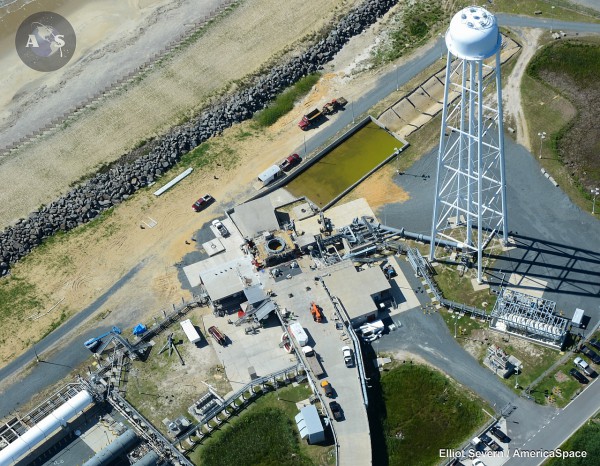

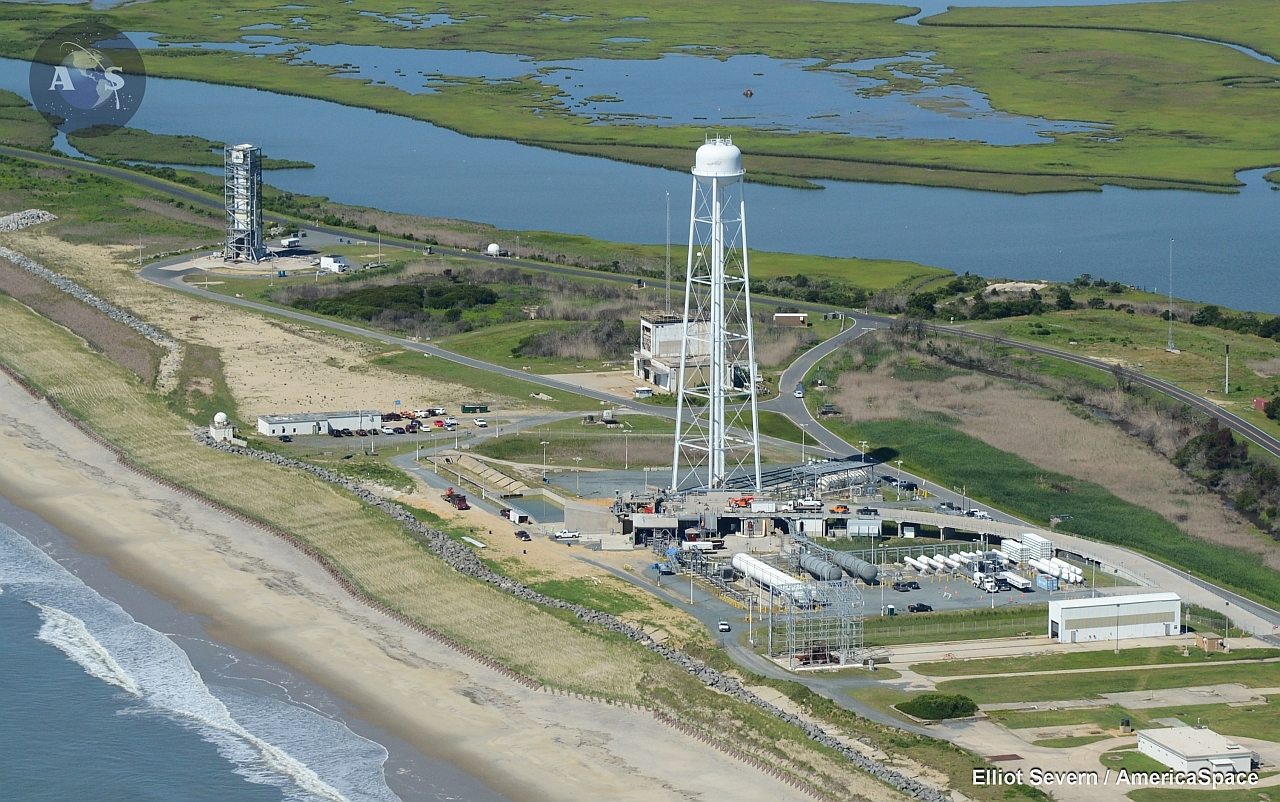




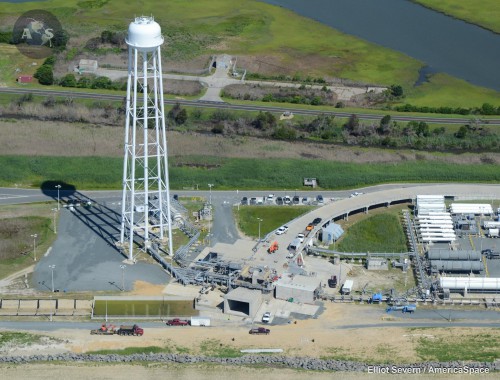
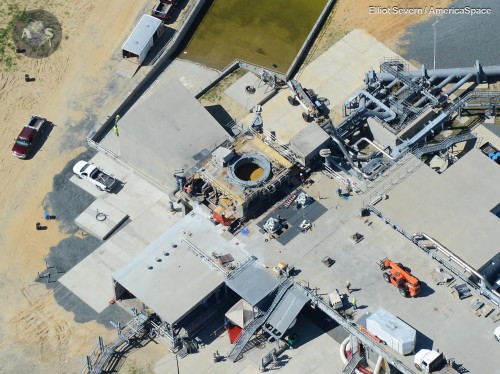
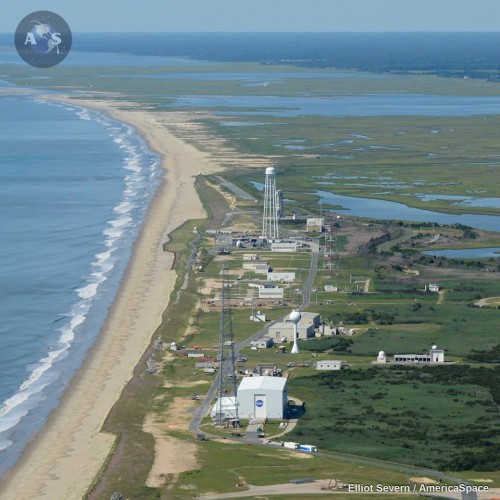


Finally, recovery. I think that Orbital ATK need a backup launch pad at Wallops, too or the Cape.
Isn’t that what they are doing? Orbital’s next two Cygnus missions will be launched from LC41 at Cape Canaveral. They’re using Atlas V as their backup booster and it has its own pad ready to go..